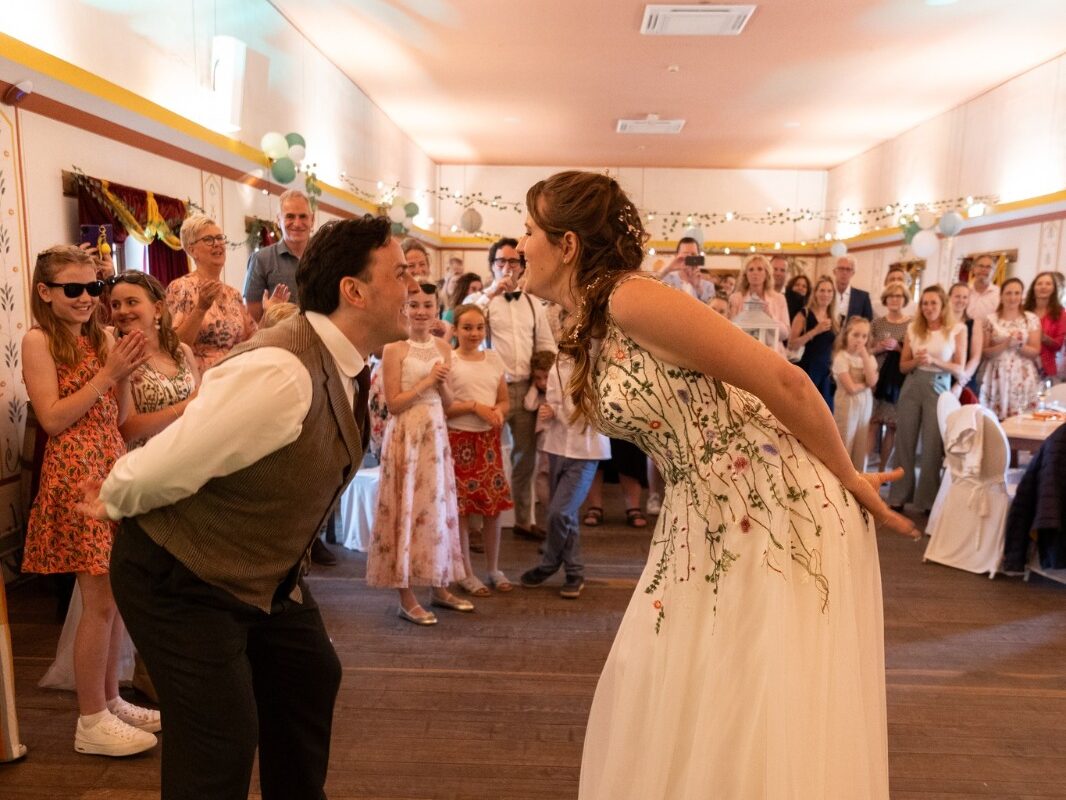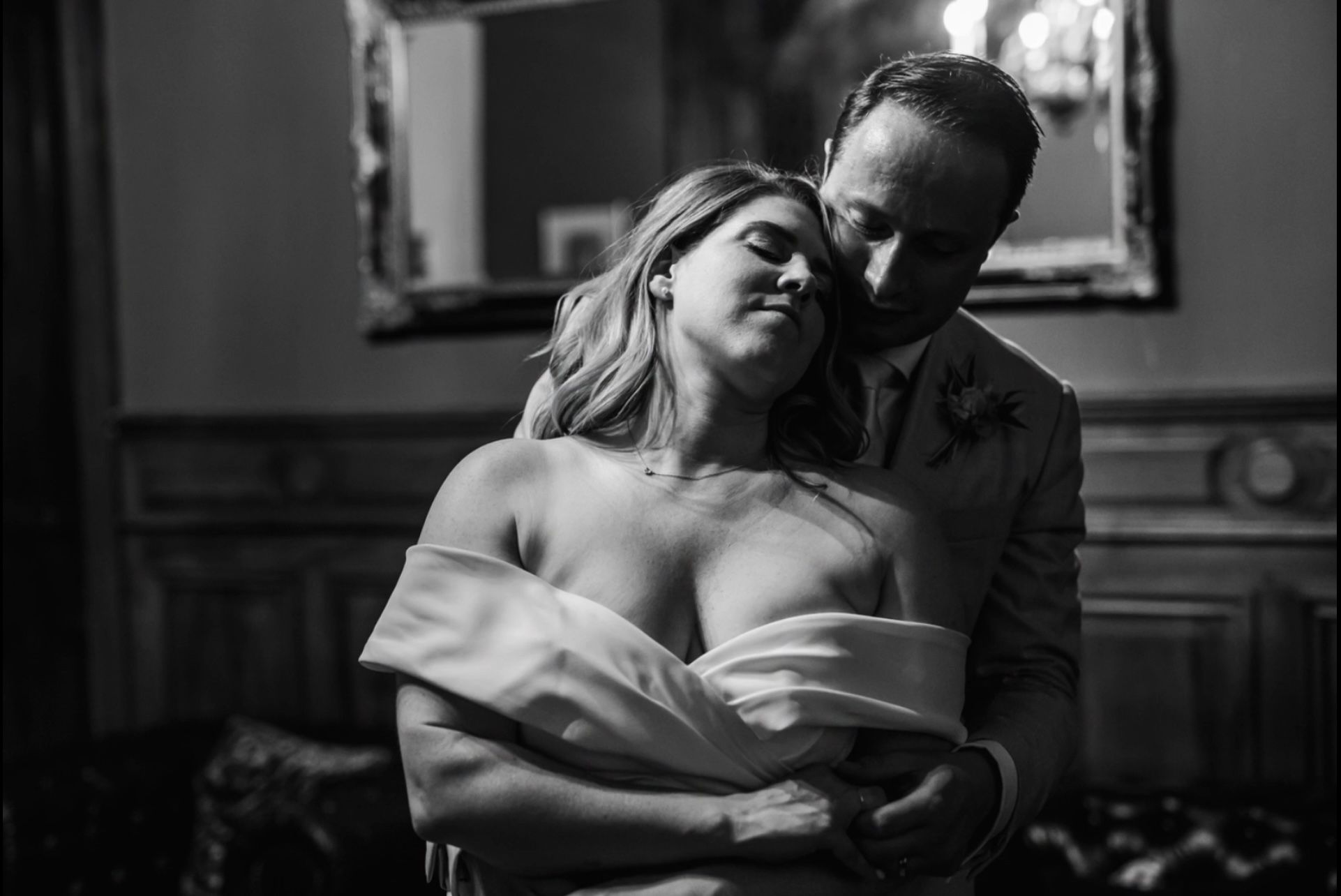About 5 or 6 years ago, a friend showed me a video clip of Mickey Fortanasce and Kelly Arsenault dancing Slow Bal. Before that moment, I had no idea such a thing as Slow Bal existed. I was teaching Lindy Hop and learning Balboa, but Slow Bal…… it completely mesmerised me. And so my Slow Bal journey began.
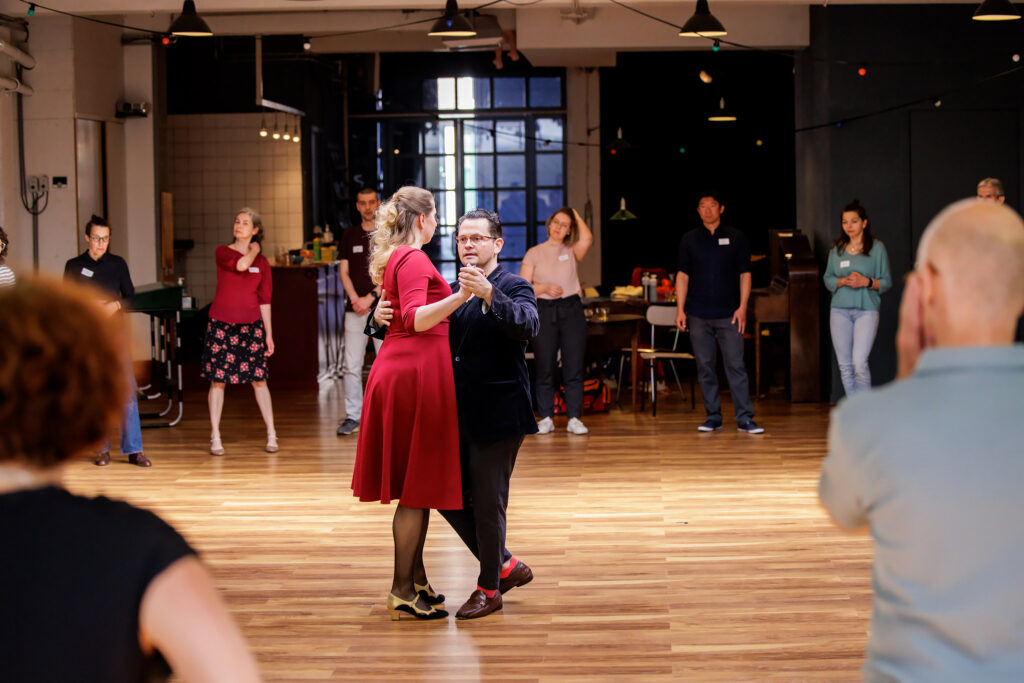
My quest to the roots of Slow Bal
At the time, there weren´t any Slow Bal teachers around, no events to go to. It was the online course that Mickey and Kelly created that made Slow Bal accessible not only to me, but to people all over the world. And for that, I will be eternally grateful. In my quest to find out more about the history and roots of this beautiful dance, I started where it began for me. In this interview, Mickey shares his knowledge of the dance and the people who danced it.
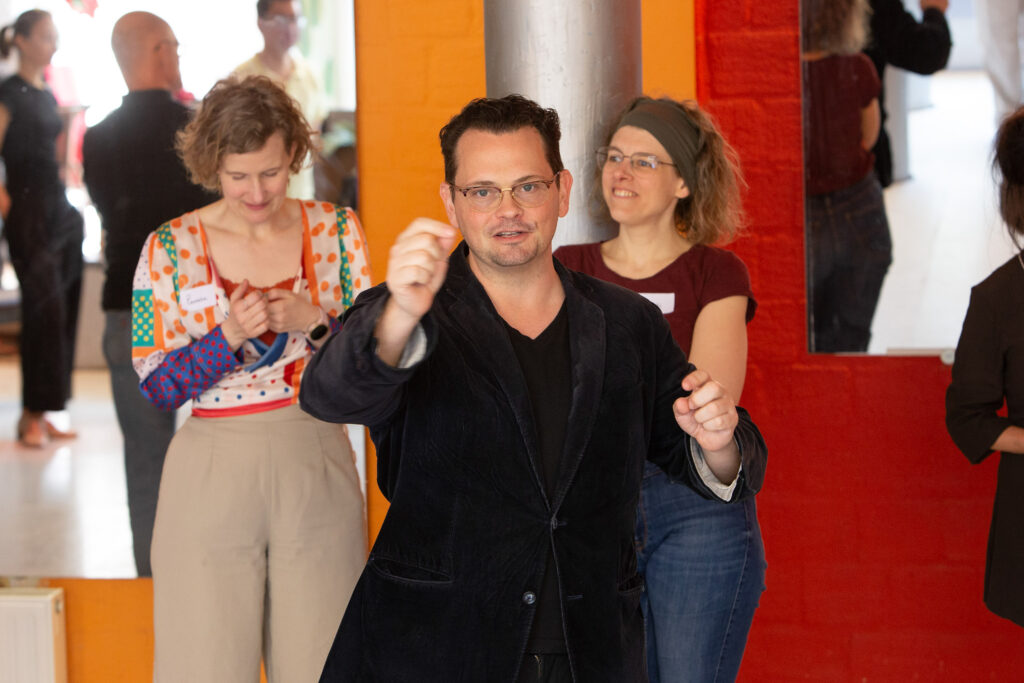
Who is Mickey Fortanasce?
After a few years of watching Lindy Hop, Shag and Balboa at local swing clubs in Los Angeles, Mickey began his dance education in 1999. After moving to New York, he began teaching local classes for the New York University Swing Dance Society. Traveling between New York City and Los Angeles during this period gave his dance education a unique perspective as he was able to meet and watch the old-timers from both coasts on the dance floor. With this education, Mickey gained the confidence and vision that brought him to his first competitions, choreographies and performances in 2001.
Mickey and Kelly Arsenault have been dancing and competing since about 2005. During this time, their innovation and showmanship, coupled with their love of dance history and theory, have led them to become internationally recognized teachers and competitors in both Lindy Hop, Balboa and Slow Bal. Together they have won numerous competitions all over the world, including the International Balboa Championships and the The All Balboa Classic Championships. They have spent a good deal of their career bringing Balboa and Slow Balboa into the spotlight, by teaching, choreographing and performing all over the Globe.
Deirdre Schoemaker and Mickey Fortanasce talking about the history of Slow Bal (watching time: 33 minutes)
The Interview with Mickey Fortanasce
Where does Slow Bal come from and does it have the same roots as Lindy Hop and Balboa?
“Slow Bal is a term that Dean Raftery first called his own dance that he would dance with his wife Nancy. But there was also a time where Ray Cunningham went out and did a Laminu dance at a Balboa Rendezvous and Dean Raftery referred to that as a style of Slow Bal.
(The Balboa Rendezvous was the biggest Balboa competition at the end of the last century and the beginning of this century. It was also the only swing event where all the old-timers were brought together and interviewed. Sometimes they were even asked to participate in the jury of the dance competitions.)
I think for Dean, dances that were lended from Balboa and done slowly were all considered Slow Bal. I try to keep Slow Bal as a token of the way he danced with his wife.”
So Slow Bal nowadays is actually based on the way two people danced?
“It’s actually not so uncommon to give a dance a general name while the style is very typical for one person. In Balboa we see the same thing. The way people dance nowadays is very specific to how Maxie Dorf danced. But we don’t call it Maxie’s Balboa, we just call it Balboa. Dean would get grouchy if you called Slow Bal anything else.”
On the left you see one of the old-timers, Ray Cunningham, dancing Laminu. On the right Mickey is replicating his dancing.
If we would travel back in time, could we see people dancing Slow Bal in the 1930’s and 1940’s the way Dean and Ray danced?
“They were a little bit later than the 1930’s when they were doing Slow Bal. I wouldn’t put a date to it, because I don’t know at what time they started to dance Slow Bal. But I do know that they were very young. Some people think that Slow Bal is just the way Dean danced with his wife in the 80’s, but he was dancing it before then. He talked about doing it before then.”
In Lindy Hop there is a movement going on that we should pay more attention to where the dance is coming from. Honour the roots and the history. How does this translate to Slow Bal?
“I think you have to honour the dance, respect the present and never forget to move forward. It’s like in a language. Once you stop creating words, it becomes a dead language. The same is true for dancing. We need to keep creating and innovating. The difference with the oldtimers is that they didn’t have anyone telling them how to dance Slow Bal. They just did what they wanted to do. But that doesn’t mean we can only dance the way they danced.”
This video shows another old-timer, Dean Raftery, dancing his Slow Bal with Kara Britt.
Could we say Slow Bal has the same influences as Lindy Hop and other Swing dances?
“Well, if you believe it in one area, you have to believe it in the other. I find it obvious that these are all Jazz Vernacular Dances and are therefore rooted to jazz and to Black Culture. The music is coming from New Orleans and then travelled to Harlem, eventually making it over to California. As far as the dance goes… Balboa wasn’t a dance everyone knew. For example Norma Miller. She was all like ‘I never saw Bal’. About Shag she used to say ‘It’s what the white folks are doing’. Where the dance comes from is different from where the music comes from. Was it something that was already danced to Latin music before it was danced to Jazz music? I just wish we knew more about the roots of Slow Bal. There is a lot of speculation.”
You refer a lot to Balboa. I used to see Slow Bal really as its own dance even though it has many similarities to Balboa. Is Slow Bal the right name for the dance we dance?
“Absolutely yes. Both Dean and Ray danced Slow Balboa for the same reason. They were honouring the memories of their wives. They loved these people so much and it’s what they did slowly with them. It’s a romantic story and they shared it with others. I think that is one of the most beautiful reasons to teach a dance I’ve ever heard.”
“Dean is the guy that gave us pivot steps and these snaking formations in Balboa. The quick quick slow. His rotation in his dancing is different in terms of how he moves his body. And if you apply a triple step in the way he would dance balboa, it becomes Slow Bal. So coming back to the question: if you want to be specific, be specific. Call it Deans Slow Bal. In the end I don’t care what people call it. I’m trying to keep the dance alive, not the name alive.”
Mickey and Anna-Maria Bernhard dancing Slow Bal.
How did you discover Slow Bal?
“I think it was in 2003 or 2004, at the first All Balboa Weekend that me and Kelly ever went to. We were friends with a couple there who were very close to Dean. Dean was an old-timer but people weren’t paying so much attention to him yet, because we had more popular old-timers for that time around. So he was just sitting there in a corner and we were introduced. He asked Kelly for a dance, and Kelly is a very sensitive dancer. She feels things out and learns so very quickly. I got to see Kelly dance with Dean for a few dances and it was so smooth. So Slow Bal was an answer for something I could do and love to slow music.”
“Later he taught Slow Bal at the Balboa Rendezvous –and at other events… The Balboa Rendezvous was the largest Balboa Competition of this time and held the International Balboa Championships. It was started by Joel Plys and is the ONLY swing event of its time to bring all the old-timers together in one place to interview them and have them watch and in some cases judge the Finals of a three round Balboa competition. It was the first event Kelly and I won and largely launched our teaching journey. At any rate we loved taking classes here with Dean and he loved dancing with Kelly and that was very helpful for me. Trying to recreate what it felt like when she was dancing with Dean. There was a lot of ‘No that’s not it’.”
Are you training a lot to keep developing your Slow Bal skills?
“I wish I was! But I’m out here in Knoxville and there are only a handful of people who can do Slow Bal. The dance was growing before COVID happened. But just like everywhere else in the world, there is not as much happening at the moment.”
Dean Raftery teaching a Slow Bal class with Randy and Kara.
But do you still feel that you should improve your Slow Bal? Or are you happy with where you are?
“There isn’t a dance that I do without me trying to do something new. I feel like that’s my way to contribute. I’m a creative person, so I put something out there and hope someone will pick it up, improve upon it or clean it up. You should never stop improving. The old-timers said the same thing. We are all doing different things than they were. But that is good. You have to keep on moving.”
How do you feel about your own Slow Bal skills compared to upcoming dancers?
“There are no great balboa dancers who are not the futures intermediate dancers. We think that our greats are the greatest there is ever going to be. And if the dance stops, that’s true. But just like in Lindy Hop, when you saw the people in the early 2000’s when we thought no-one would ever be as good as they were. But nowadays, they would hardly make it into a final of a dance competition if no-one knew who they are.”

How does your love for Slow Bal relate to your love for Balboa and Lindy Hop?
“Lindy Hop was my first love. Steve Garret and Denise Felan/Paulino were my first teachers. In my third Lindy Hop lesson, they taught me Balboa. And they taught it to me as the thing to do when the music gets fast. They were the big balboa dancers at the time, although I did not realize. So Bal was just a part of my Lindy Hop. There was this whole period of time, where every Lindy Hop routine had a little Balboa section in it. It was only when we realized that you can do a whole song with just balboa, and that it’s really its own dance, that the scenes grew apart. So then Balboa had its own dance events, and Balboa events also offered some Slow Bal classes, and now we have separate Slow Bal events.”
So which of the dances is your main passion?
“Slow Balboa is my main passion. Without people who love it and teach it, the dance might not survive. And I want to keep the dance alive. Slow Bal is the thing I care about most because I invested so much time in restoring some things that were already there. I broke down every clip that existed to study the movements of the dancers.”
What is the greatest misconception about Slow Bal
“Everyone wants their story and there are some people who are saying that Dean was scamming people and that Slow Bal wasn’t a thing. And that always bothered me. Because I talked to him when he was older and I have seen him getting teary. The same thing with Ray. We had drinks and dinner and he was teary about his wife. And you could see the love there. So when people say that Slow Bal isn’t a thing that really existed, I want to smack them. It bothers me so much because Dean and Ray are people I respect and I saw them love the dance.”
“I also get bothered when people do Slow Bal but can’t do Dean’s or Ray’s version; a Slow Bal basic or a Laminu basic. If people have their own version, but know these two versions, I don’t care. Have your take on it. But if you don’t know these two dancers, and you can’t replicate what they do, it just doesn’t feel right. I would love it if more people would pay attention to those vintage basics. But again, it’s impossible. People are going to do their own thing.”
Laminu demonstration by Ray Cunningham and Darleene Lind in 2004.
Well, if you look around. You see that Deans Slow Bal is being taught way more than Rays version.
“True. And I pushed that for a long time, until I saw the clip of Ray dancing with Darleen Lind at the Balboa Rendezvous. In this clip he dances very slippery and very rotational. It’s not the box step that you see him dancing and teaching a lot. That made me pulled a lot more towards Laminu.”
If we take out our crystal ball, what will Slow Bal look like in 5 or 10 years?
“I’m always worried about the dance and what it becomes. I kind of worry about the spirit. I see Slow Bal as a romantic dance. And we have a lot of slow dances that are not particularly romantic, like Blues. I love the music, but what they are talking about in those lyrics is not always sexy all the time so dancing sexy to it sometimes feels disrespectful. Slow Bal has always been this kind of classic love story. The music rolls and has a particular spirit to it.
I wish that someone would pick it up and make people feel romantic, make people feel in emotion. It doesn’t have to be that you are romantic with everyone you dance with, but that you can make the dance romantic. That you can create that emotion. People sometimes still dance it like ‘look I put this puzzle together, it’s a puzzle’. But it’s not a picture. It’s a feeling. That is what I wish more than anything. That in 5 years from now people watch and look and they want to do it because they feel something.“
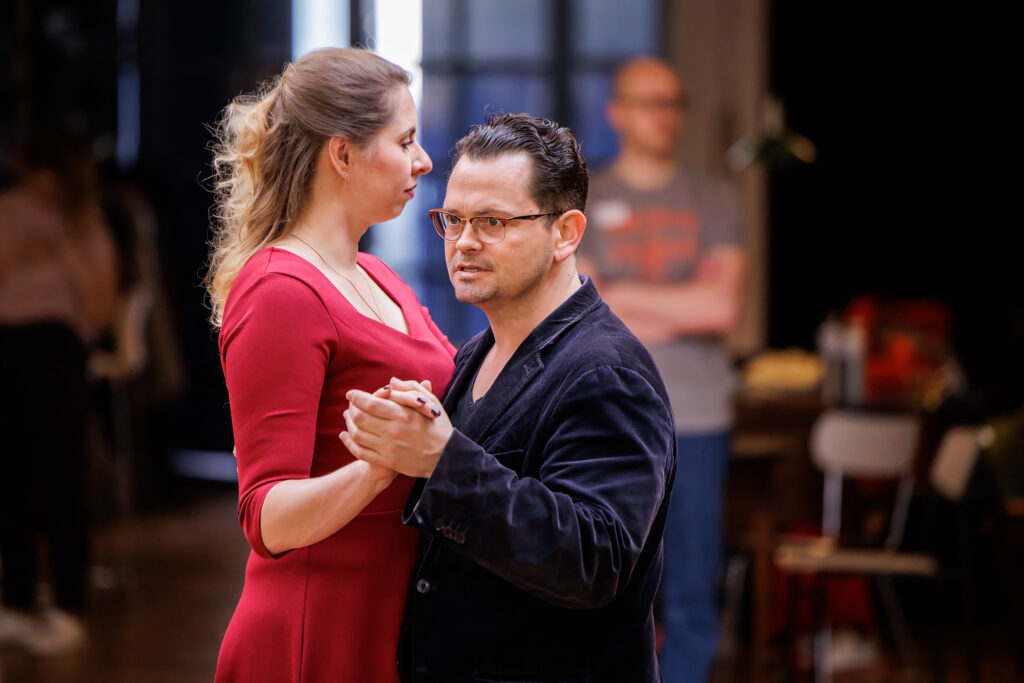
Picture made by Wouter Vellekoop.
More about the history of Slow Bal
Do you want to read more about the history of Slow Bal? Mickey wrote more stories about Dean and Ray on his website. Click here to check it out.
